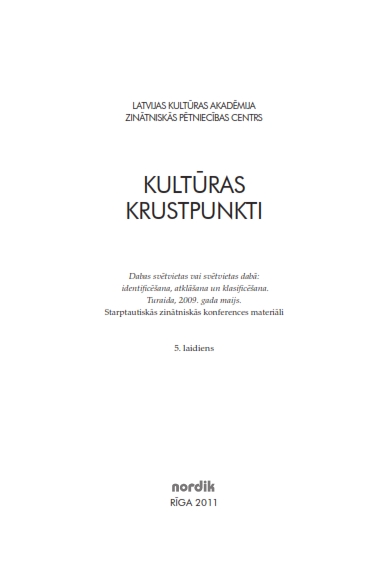How Many Radogoščes were there, or the Most Popular Types of Slavonic Sanctuarles
How Many Radogoščes were there, or the Most Popular Types of Slavonic Sanctuarles
Author(s): Edvard ZaikouskiSubject(s): Cultural history, Customs / Folklore, Ethnohistory, Local History / Microhistory, Cultural Anthropology / Ethnology, History of Religion
Published by: Latvijas Kultūras akadēmija
Keywords: Radogošč; Rethra; Slavonic sanctuaries; types of sanctuaries; tradition; culture; cults; pagan sanctuaries;
Summary/Abstract: Radogošč (Rethra), situated in the territory of the Lutizen tribal union and described in a number of early medieval written sources (Thietmar of Merseburg, Adam of Bremen, Helmold), is one of the most famous Slavonic pagan sanctuaries. According to the descriptions, the sanctuary, devoted to the god Radegast-Svarozic, was situated at the shore of a lake and surrounded by a sacred forest. The location of Radogošč is not yet established, although there are over 30 hypotheses as to its location. A total of 40 toponyms related to Radogošč can be found within the settlement area of the Slavs – Radegast, Radigošť, Radogošč, Radogošča – from the Elbe and the eastern border of Austria to the upper reaches of the Oka, and from the Baltic Sea to the Middle Danube. There is a group of hydronyms among them, while the Czechs have an ancient tradition of celebrating the summer solstice on Mount Radigošť in Moravia. Excavation of the Radahoshcha settlement outside Navahrudak, Belarus, indicates that it belonged to a Slavonic population with a culture similar to that of the Luka Raikovetskaia Culture (8th–10th century) and must have been used as a sanctuary (distinctive exterior features, long houses, the location of a cultural stratum in a narrow belt along the edge of the site). Finds of the late 1st millennium have also been made at other monuments with analogous names. The geographical position of such toponyms coincides with the area of the Prague Culture and the descendants of this population, as well as with that of the Sukovo-Dzedzin and Feldberg Cultures. In spite of the fact that written sources fail to specify the functions of the god Radegast-Svarozic, they can be reconstructed on the basis of a comprehensive analysis. He was the head of the pantheon in societies with theocratic and popular assembly systems, connected with the cults of the sun and water. Apart from this, he had magic and military functions. The excavations at the Radahoshcha settlement in Belarus indicate that places bearing similar names are promising indicators in the search for the remains of pagan sanctuaries.
Journal: Culture Crossroads
- Issue Year: 5/2011
- Issue No: 1
- Page Range: 168-183
- Page Count: 16
- Language: English

